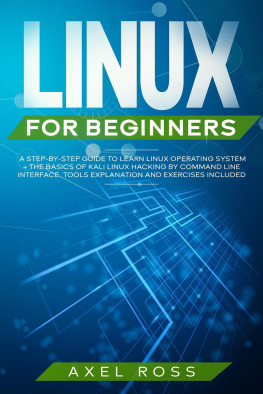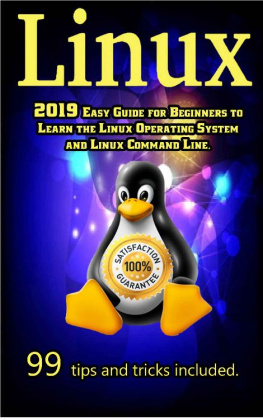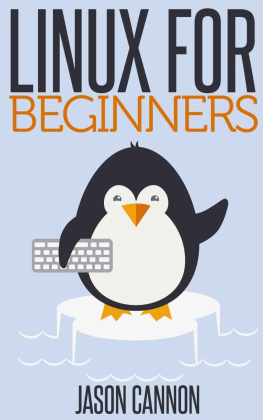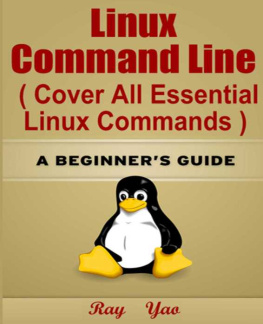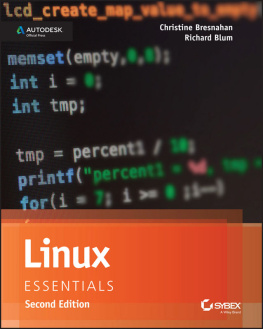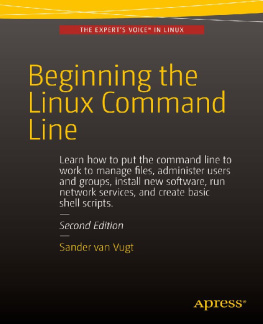Nathan Jones - LINUX FOR BEGINNERS: Discover the essentials of Linux operating system. Best Practices to learn Installation, Configuration and Command Line Efficiently
Here you can read online Nathan Jones - LINUX FOR BEGINNERS: Discover the essentials of Linux operating system. Best Practices to learn Installation, Configuration and Command Line Efficiently full text of the book (entire story) in english for free. Download pdf and epub, get meaning, cover and reviews about this ebook. year: 2019, genre: Computer. Description of the work, (preface) as well as reviews are available. Best literature library LitArk.com created for fans of good reading and offers a wide selection of genres:
Romance novel
Science fiction
Adventure
Detective
Science
History
Home and family
Prose
Art
Politics
Computer
Non-fiction
Religion
Business
Children
Humor
Choose a favorite category and find really read worthwhile books. Enjoy immersion in the world of imagination, feel the emotions of the characters or learn something new for yourself, make an fascinating discovery.

- Book:LINUX FOR BEGINNERS: Discover the essentials of Linux operating system. Best Practices to learn Installation, Configuration and Command Line Efficiently
- Author:
- Genre:
- Year:2019
- Rating:5 / 5
- Favourites:Add to favourites
- Your mark:
LINUX FOR BEGINNERS: Discover the essentials of Linux operating system. Best Practices to learn Installation, Configuration and Command Line Efficiently: summary, description and annotation
We offer to read an annotation, description, summary or preface (depends on what the author of the book "LINUX FOR BEGINNERS: Discover the essentials of Linux operating system. Best Practices to learn Installation, Configuration and Command Line Efficiently" wrote himself). If you haven't found the necessary information about the book — write in the comments, we will try to find it.
Of all operating systems, Linux is different; it is nothing like Windows and not anywhere close to Mac OS either.
It is the OS of hardcore computer users - users that understand computers more than just pointing and clicking icons!
Are you looking to elevate yourself from where you are to the world of Linux computing where you start understanding how to give computers commands using command line and other cool stuff that the ordinary Windows and Mac OS user does not have a clue about?
Do you wish to add Linux OS as one of your skills in your CV?
Or wish to slowly venture into the world of hacking and have heard that knowing how to use Linux will set you up for success?
The truth is; Linux is a vast OS. As such, trying to learn everything at once will be overwhelming; you have to break everything up into small bits so that you can swallow with ease.
And thats what this book does; to ensure you dont get overwhelmed by the vast amount of information on Linux out there.
It doesnt make any assumptions about your background or knowledge of Linux and takes a step by step, logical and systematic beginner friendly approach to all concepts, commands and jargonto ensure at the end, you can start using Linux as if you learned it years ago!
In it, you will learn:- How and why Linux is the computer geeks favorite OS
- What you need to run Linux on your PC whether you us Windows or Mac
- The language/jargon of Linux in simple language to ensure you know what everything in this book means and is applied
- How to install and set up Linux for first time use
- What a Linux distribution is, the different distros available and how to choose the most suitable for your situation
- The most popular basic commands in Linux, including how to use them
- The Linux file system, including how and where to find programs, documentation as well as configurations seamlessly
- How to use the Shell in Linux
- How to rename, move, delete and create directories
- How to give instructions to Linux terminals
- How to work with text files in Linux
- How to compare the contents in files, list files, read them, edit, copy, compress and delete them whenever you want
- How to manage all running processes in Linux, manage users and become an administrator
- How you can run processes like other users by switching users in Linux
- How to become more efficient as a Linux user with scheduling and automation by leveraging the power of cron
- How to manage disks and file systems in Linux, including commands that will help you with all that and more
- Using Linux for security, penetration testing, hacking and more
- How to take Linux use to the cloud
- And much more!
Are you excited to go all in into the world of Linux?
If you are.
Click Buy Now With 1-Click or Buy Now to get started!Nathan Jones: author's other books
Who wrote LINUX FOR BEGINNERS: Discover the essentials of Linux operating system. Best Practices to learn Installation, Configuration and Command Line Efficiently? Find out the surname, the name of the author of the book and a list of all author's works by series.






